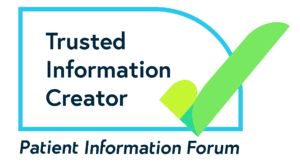Why does my breast hurt?
Hormonal changes, injuries and infection are some causes of breast pain. Breast pain (also known as mastalgia) is common and usually isn’t anything to worry about. On its own, it is very rarely a sign of breast cancer. You can find out more about understanding breast changes, as well as how to check your breasts.
There are two types of breast pain, cyclical and non-cyclical. Cyclical breast pain is linked to your period. Non-cyclical breast pain happens due to other reasons.
Cyclical (period) breast pain
Cyclical breast pain is part of your menstrual cycle. It’s common, and natural, and you can treat the pain with medication.
This type of breast pain affects people who have periods (menstruate). It happens because of hormones that control periods (your menstrual cycle). Cyclical pain usually happens around the time of your period, starting around 7-10 days before your period and can last up to 2 weeks.
Hormonal, or cyclical breast pain, usually causes tenderness, achiness and swelling. Other less common symptoms include burning, prickling or stabbing pains. Cyclical breast pain can also affect the armpit, chest and shoulder, as well as just one or both breasts. You can read more on natural breast changes.
Non-cyclical (non-period) breast pain
Non-cyclical breast pain is not part of the menstrual cycle and is most common in women over 40. Too much caffeine, poor posture, or injury to your breast tissue are potential causes.
Sometimes, pain in this area might not be in your breast tissue at all, but instead in your chest wall, pectoral muscles or ribs. You should speak to your GP if you’re worried about this.
Chest wall pain
Your chest wall is the chest area made from rib bones, muscle and other parts of the chest that protect your organs. Chest wall pain often feels like breast pain, however it is pain in these bones or muscles of the chest.
It can be caused by injury, like a pulled muscle, cracked rib or knock to the chest. Chest wall pain can also be due to infection, acid reflux or poor posture.
